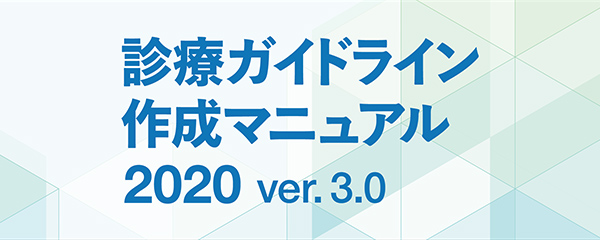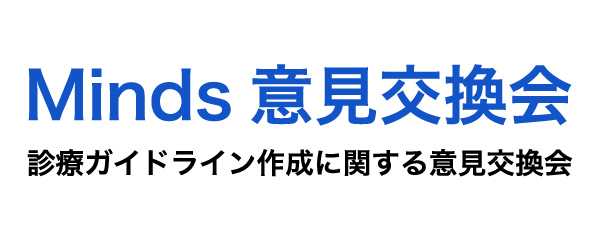病気のことや治療法について、もっとしりたい。
Mindsが公開している「診療ガイドライン」「ガイドライン解説」は、
科学的根拠に基づいて作成され、評価・選定を経て掲載されています。
診療ガイドラインを探す.
新着ガイドライン[ ガイドラインをもっと見る ]
お知らせ
| | ※Minds通信※【新着ガイドラインまとめ】2024年10月~2025年2月新規公開分 |
| | Mindsウェブサイトリニューアル(2023年度実施)に伴うガイドラインの追加公開(8件) |
| | 「診療ガイドライン国際動向」ページを新規公開しました |
| | 「COVID-19に関する情報提供」「GRADEアプローチ」「終了したイベント」のページを更新しました |
| | 「がん薬物療法に伴う末梢神経障害」の診療ガイドラインを公開しました |
| | ※Minds通信※【新着ガイドラインまとめ】2024年10月~2025年2月新規公開分 |
| | Mindsウェブサイトリニューアル(2023年度実施)に伴うガイドラインの追加公開(8件) |
| | 「診療ガイドライン国際動向」ページを新規公開しました |
| | 「COVID-19に関する情報提供」「GRADEアプローチ」「終了したイベント」のページを更新しました |
| | 「がん薬物療法に伴う末梢神経障害」の診療ガイドラインを公開しました |
| | 【募集終了】「基底細胞癌診療ガイドライン」パブリックコメント募集のご案内 |
| | 【募集終了】「有棘細胞癌診療ガイドライン」パブリックコメント募集のご案内 |
| | 【募集終了】「皮膚リンパ腫診療ガイドライン」パブリックコメント募集のご案内 |
| | 【募集終了】「性分化疾患(DSD)の診療ガイドライン2025」パブリックコメント募集のご案内 |
| | 【募集終了】「皮膚血管肉腫ガイドライン」パブリックコメント募集のご案内 |





